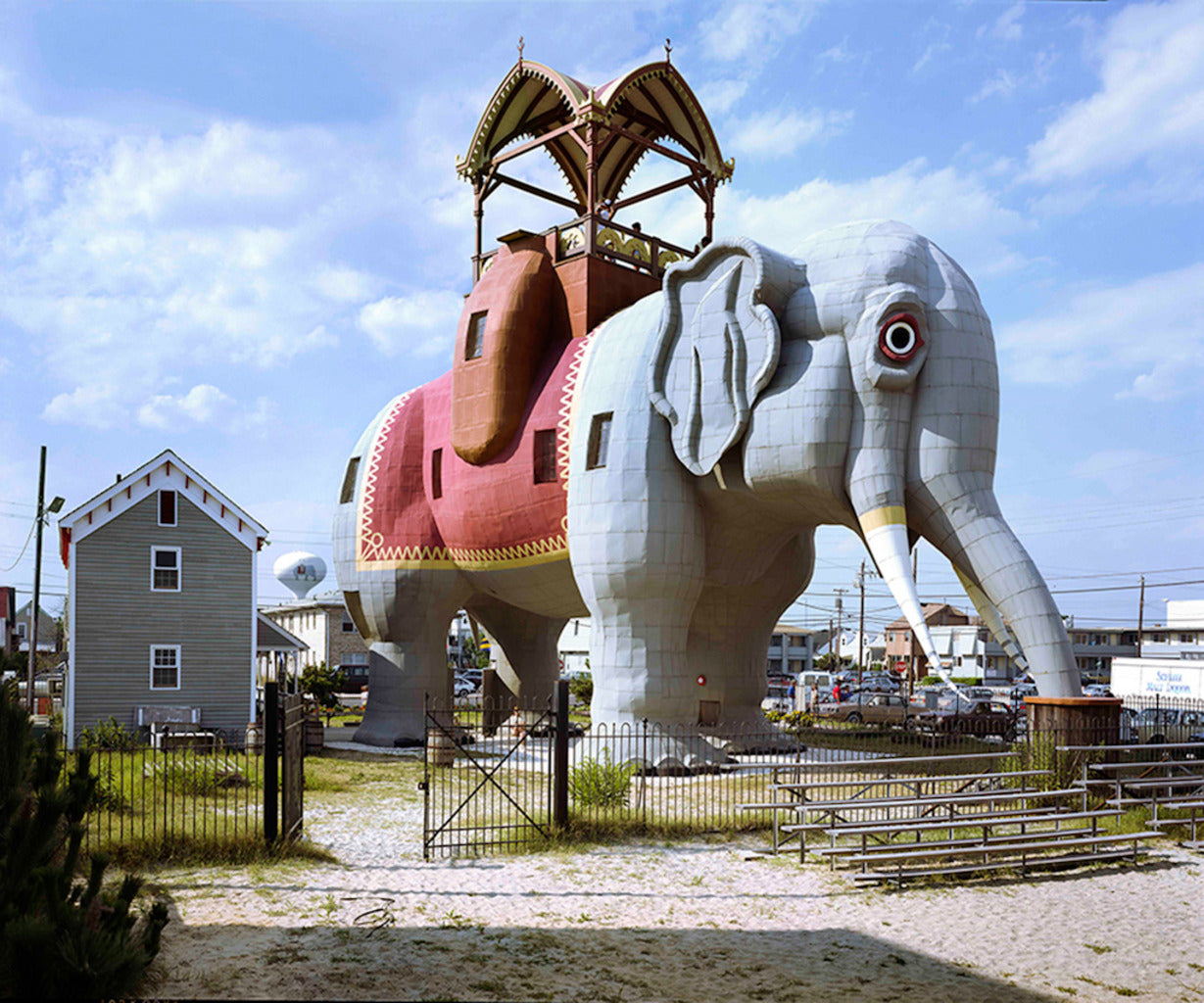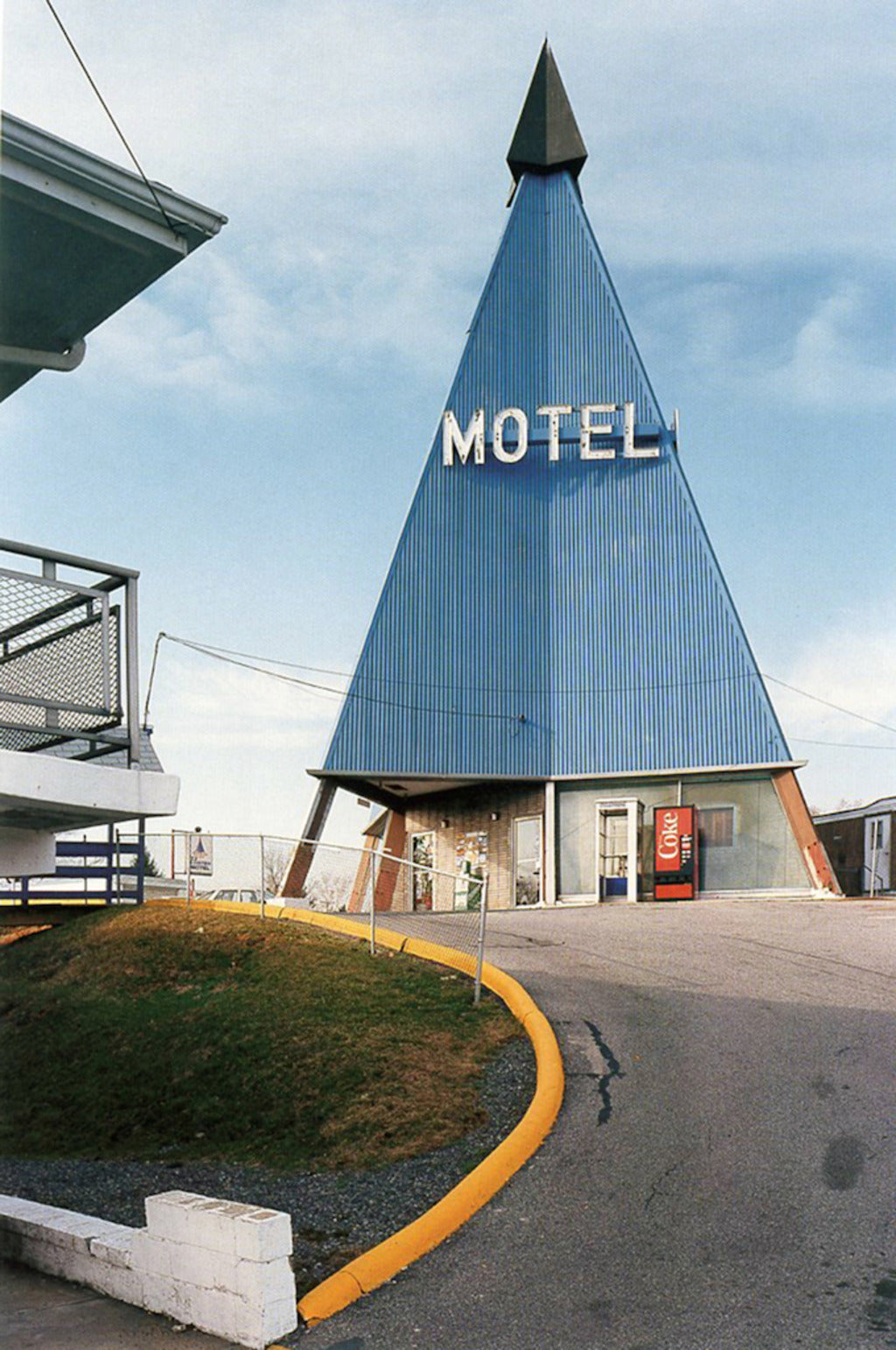For more than three decades, photographer David Graham has chronicled the zany colors of vernacular America. Produced in conjunction with Gallery 339’s retrospective of Graham’s work, this selection of his images is presented along with an interview with the photographer by W. M. Hunt.
— The Editors
— The Editors



Bring the camera.
David Graham is a great American photographer.
The “great” part of that declaration is a given. The “American” part may be superfluous, but it speaks of Graham’s gumption, initiative, and resourcefulness in zeroing in on the spectacular in the everyday on his extended road trip of more than 35 years.
Look at the titles of his classic books: Only in America (1991), Land of the Free (1999), American Beauty (1987), Taking Liberties (2001), and Declaring Independence (2004). Next up is certainly Purple Mountain Majesties. On the surface, it seems as if the whole oeuvre is a big fish story (see the cover of his book American Beauty, Aperture, 1987), except that Graham is a “road scholar,” reporting and not exaggerating. The heartbeat is full and pumping, energizing the journey. These works are, for the most part, short tales, postcards home from the road.
The entirety of Graham’s retrospective Thirty-Five Years / 35 Pictures (at Gallery 339 in Philadelphia) is heartfelt and smart storytelling. What seems like a quick glance out the car window is actually a slower, more plodding look under each rock as he goes—it’s a more intuitive inquiry done with an open eye and an appreciation of the unlikely and uncanny. The storytelling of a long, idyllic marriage on a lonely island in Alone Together, for instance, is as tender and sharp as a Chekhov tale.
David Graham is a great American photographer.
The “great” part of that declaration is a given. The “American” part may be superfluous, but it speaks of Graham’s gumption, initiative, and resourcefulness in zeroing in on the spectacular in the everyday on his extended road trip of more than 35 years.
Look at the titles of his classic books: Only in America (1991), Land of the Free (1999), American Beauty (1987), Taking Liberties (2001), and Declaring Independence (2004). Next up is certainly Purple Mountain Majesties. On the surface, it seems as if the whole oeuvre is a big fish story (see the cover of his book American Beauty, Aperture, 1987), except that Graham is a “road scholar,” reporting and not exaggerating. The heartbeat is full and pumping, energizing the journey. These works are, for the most part, short tales, postcards home from the road.
The entirety of Graham’s retrospective Thirty-Five Years / 35 Pictures (at Gallery 339 in Philadelphia) is heartfelt and smart storytelling. What seems like a quick glance out the car window is actually a slower, more plodding look under each rock as he goes—it’s a more intuitive inquiry done with an open eye and an appreciation of the unlikely and uncanny. The storytelling of a long, idyllic marriage on a lonely island in Alone Together, for instance, is as tender and sharp as a Chekhov tale.



Graham loves signs and murals: “Really really good,” “Bring the camera,” “Buy now pay later,” “Hand car wash,” “Almost paradise,” “Good luck.” These are messages left for him to read on the side of the road. Graham brings a wicked and hearty sense of humor to his practice. He sees funny. He sees the irony, the illogical, and the crazy balance. Grown Shriners in kiddie cars. A burger that ate L.A. Elvis. The images are decent and sweetly, surreally ludicrous.
You look and keep grinning.
He also sees in color. Not enough attention has been paid to Graham’s acute and musical appreciation of color. He finds the rainbow arpeggios at the “no tell” motels. It isn’t always the primary colors that beckon. Look at his flood-damaged homesites, his abandoned meals, his impersonators in their garish interiors.
I heart Dave.
You look and keep grinning.
He also sees in color. Not enough attention has been paid to Graham’s acute and musical appreciation of color. He finds the rainbow arpeggios at the “no tell” motels. It isn’t always the primary colors that beckon. Look at his flood-damaged homesites, his abandoned meals, his impersonators in their garish interiors.
I heart Dave.


W. M. Hunt: Thirty-Five / 35, huh? Congratulations. You are an American original. How was it to select a single picture from each year for the show?
David Graham: I think it worked out great. It was fun going through the work and finding the right picture for the right year. It also was rewarding to have a collaborator [Martin McNamara at Gallery 339] who was as in love with the work as I am. It was frustrating, however, to come upon a year that was awash in great pictures—1989, 2006, for instance—and only be able to choose one. Ultimately, that was OK.
WMH: Has the process allowed for some insights into yourself and into the idiosyncratic David Graham oeuvre?
DG: The payoff was seeing threads that run through the work from the beginning until now—i.e., Marge Gapp’s Studio [Philadelphia, 1979] has a wonderful pairing with Steve Tanis Studio [Arden, Delaware, 2009] or the 2013 picture that I would have loved to have taken any year, Route 130, NJ.
David Graham: I think it worked out great. It was fun going through the work and finding the right picture for the right year. It also was rewarding to have a collaborator [Martin McNamara at Gallery 339] who was as in love with the work as I am. It was frustrating, however, to come upon a year that was awash in great pictures—1989, 2006, for instance—and only be able to choose one. Ultimately, that was OK.
WMH: Has the process allowed for some insights into yourself and into the idiosyncratic David Graham oeuvre?
DG: The payoff was seeing threads that run through the work from the beginning until now—i.e., Marge Gapp’s Studio [Philadelphia, 1979] has a wonderful pairing with Steve Tanis Studio [Arden, Delaware, 2009] or the 2013 picture that I would have loved to have taken any year, Route 130, NJ.
WMH: What did you recognize that you may not have seen before?
DG: The structural continuity of the pictures. What I mean is that the basic visual vocabulary or grammar, if you will, was established early, and I still use it today. A lot of that structure comes from looking at thousands of photographs at the suggestion of Emmet Gowin and Jim Dow. Emmet was and is my neighbor, and he would show me books and things and his own work in the ’70s. One year, Jim Dow, Emmet’s close friend, replaced Emmet at Princeton University while he was away on sabbatical; Jim brought his vast collection of slides of photography. I would borrow three carousels a day and look at them. Also, I saw a lot of Jim’s work. Jim printed for Walker Evans, and their work has many of the same characteristics. Oh yeah, and Walker Evans has been the number one influence.
DG: The structural continuity of the pictures. What I mean is that the basic visual vocabulary or grammar, if you will, was established early, and I still use it today. A lot of that structure comes from looking at thousands of photographs at the suggestion of Emmet Gowin and Jim Dow. Emmet was and is my neighbor, and he would show me books and things and his own work in the ’70s. One year, Jim Dow, Emmet’s close friend, replaced Emmet at Princeton University while he was away on sabbatical; Jim brought his vast collection of slides of photography. I would borrow three carousels a day and look at them. Also, I saw a lot of Jim’s work. Jim printed for Walker Evans, and their work has many of the same characteristics. Oh yeah, and Walker Evans has been the number one influence.


WMH: Besides your incredible skill with color, two things that distinguish your work are your sense of humor and your curiosity. I have this mad vision of you literally turning over each rock, laughing to yourself and out loud about how fucked things are. You are the Inspector Clouseau of the banal.
DG: I do think that is a bit of a mad vision, but, as with you, I am always looking for the absurdity in any situation, photographic or otherwise. Photographically, when I started shooting the 8 x 10…, it was so slow and so expensive that I wanted to get the most out of it, so I loaded in detail, color, subject, historical references, and…humor. I wanted everything.
DG: I do think that is a bit of a mad vision, but, as with you, I am always looking for the absurdity in any situation, photographic or otherwise. Photographically, when I started shooting the 8 x 10…, it was so slow and so expensive that I wanted to get the most out of it, so I loaded in detail, color, subject, historical references, and…humor. I wanted everything.
Graham photographs ‘with an open eye and an appreciation of the unlikely and uncanny’
WMH: What drives you to make pictures?
DG: It became an addiction. I remember when I first started using the 8 x 10 in 1979 (the first of the 35 years), I slowed down and took photos much less frequently. This was because it was so expensive and I was living on such modest means, so I would only make an exposure if I knew it was going to yield a great picture. The downside of this [frugality] was that it drove me crazy to be shooting so little, even though I was getting great pictures. My solution was to get a medium-format camera and shoot events, such as parades, county fairs, etc.—someplace that was a target-rich environment. I still have to compensate now; about a year ago, I got a small digital camera that I could have with me all the time, so I could take pictures frequently. The picture from 2012 was from the first week of having that camera on me.
DG: It became an addiction. I remember when I first started using the 8 x 10 in 1979 (the first of the 35 years), I slowed down and took photos much less frequently. This was because it was so expensive and I was living on such modest means, so I would only make an exposure if I knew it was going to yield a great picture. The downside of this [frugality] was that it drove me crazy to be shooting so little, even though I was getting great pictures. My solution was to get a medium-format camera and shoot events, such as parades, county fairs, etc.—someplace that was a target-rich environment. I still have to compensate now; about a year ago, I got a small digital camera that I could have with me all the time, so I could take pictures frequently. The picture from 2012 was from the first week of having that camera on me.


























